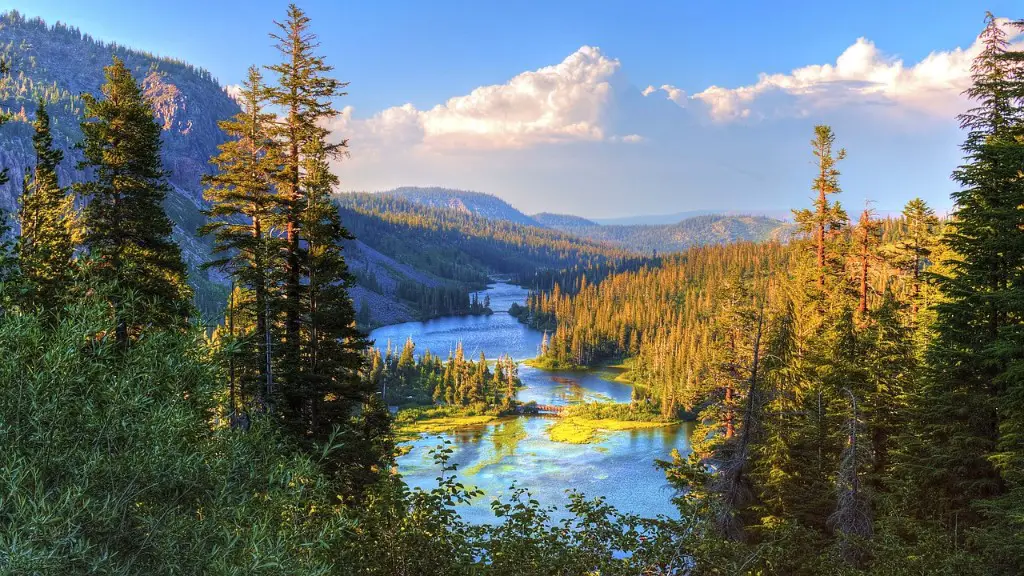History of the Nile River
The Nile River is one of the longest and most important river systems in the world. It has been an essential part of life in Egypt and its surrounding countries since ancient times. In fact, many of the ancient civilizations of the Middle East – including the powerful kingdom of Egypt – relied heavily on the river for their food and water. Even today, the river is a major source of water for many of these countries.
The Nile River originates in the mountains of East Africa and flows through several countries, including Ethiopia, Sudan, South Sudan, Egypt, and eventually, it empties into the Mediterranean Sea. It is about 6,853 km in length, making it the longest river in the world. Every year, the Nile River releases about 300 billion cubic metres of water. Over two-thirds of Egypt’s population live along the banks of the Nile, which provides an abundance of fertile land to grow crops.
The Nile River is incredibly important to the people who live near it. It is their source of fresh water, and it is also used to transport goods along its long length. The river provides a stable source of hydroelectric power, and it has even been used to irrigate large portions of the land. The river’s importance is why it has been referred to as “The Gift of the Nile” in many ancient texts.
Environmental Challenges
Unfortunately, the Nile River has been facing increasing environmental challenges in recent years. The most pressing of these is the negative impact of climate change. As temperatures rise, the flow of the river is expected to be affected and water levels may drop significantly. Additionally, population growth and overuse of water resources has put the river system under immense strain and threatens to further damage the delicate natural landscape.
On a positive note, the governments of the countries that the Nile River flows through have taken steps to try and protect the river system. Several conservation projects have been put into place, such as reforestation programmes, changes in agricultural practises, and investments in renewable energy sources. These have helped to reduce the amount of stress placed on the environment and help to maintain the Nile at its peak health.
Industrial Use
The Nile River has also been used for industrial purposes, particularly the construction industry, in recent years. The river provides an ideal resource for transportation, with the potential for vessels of any size to pass along its length. Additionally, its water is used heavily for irrigation and to generate hydroelectric power.
This has led to an increase in industrial activity along the river. This has resulted in severe pollution, both to the immediate environment and to the environment farther downriver. As a result, several countries – such as Egypt, Sudan and Ethiopia – have put in place policies and laws to restrict or outright ban certain industries near the river, with the aim of protecting the environment and preserving the river’s natural beauty.
Why is the Nile so Important?
The Nile River is a vital resource for the countries it flows through. It is a source of fresh water, food and energy, and it has been a major factor in the development of the region for centuries. The river has also been an important lifeline for the countries along its length and will continue to be so for many years to come.
The importance of the river cannot be overstated. Without it, the region would be unable to sustain the population and industry that it does. This is why it is crucial that the environment is maintained by protecting the river from overuse, pollution and other negative activities. By doing this, the countries along the river can ensure its long-term health and well-being.
Impact of the dam Projects
The construction of large dams on the Nile River has caused a significant amount of controversy. The projects have been seen as a way to provide much-needed energy and to increase agricultural yields. However, they have also been seen as a way to control the river and to restrict the flow of water to downstream countries.
The impact of the dams has been mixed. On one hand, they have provided essential hydroelectric power to the region and have allowed for increased agricultural yields. On the other hand, they have also caused significant environmental damage and have threatened the livelihood of communities in the region.
The best way forward is for the countries involved to work together and to come up with a coordinated plan that takes into account the needs of all the affected countries and that ensures the responsible management of the river.
Cultural and Social Significance
The Nile River has been an integral part of the cultural and social life of the countries it flows through for centuries. Ancient Egyptian civilization had a strong connection to the river and many of its artefacts and monuments are still around today. The river has also come to symbolize power, strength and resilience in the face of adversity.
Today, the river continues to be an important symbol of the region and its people. It is celebrated in literature and art, and is often featured prominently in festivals and other events. In many ways, the Nile River is both a physical and a spiritual force, and its presence has played an integral role in the development of the region.
Environmental Impact
The Nile River is an incredibly important resource to the countries it flows through and it is essential that it is managed in a responsible and sustainable manner. The impact of humans on the environment has been devastating in some cases, with pollution and overuse of water resources causing major damage to the river and its surrounding areas.
In order to ensure the health of the river for the long-term, it is crucial that all of the affected countries work together to create a strategy for sustainable development. This would include the reduction of pollution and overuse of water, as well as the adoption of renewable energy sources. If this is done, then the Nile River can continue to provide benefits to the people of the region for many years to come.
Conflicts over Water Rights
Conflict over the use of the Nile River’s water resources has been an ongoing issue for many years. The countries the river flows through all have different needs for the water and competing interests can often make it difficult to reach an agreement on how the resources should be used.
The most recent conflict has been over the building of a dam on the Nile River in Ethiopia. This dam could potentially provide electricity but it could also disrupt the flow of the river, which would have negative consequences for downstream countries such as Egypt. A resolution to this conflict has not yet been reached, but it is essential that all countries involved come to an agreement in order to ensure the long-term health of the river system.
Conclusion
The Nile River is an incredibly important resource to the countries it flows through and has been an integral part of life in the region for centuries. It is essential that the river is managed in a responsible and sustainable manner in order to ensure its long-term health. This can only be achieved if all of the affected countries work together to create a plan for the responsible use of its resources.




